
A Saturday you wouldn't expect in Jeddah... Perez ahead of Leclerc and Alonso. Verstappen out in Q2!
Few on the eve would have predicted a Max Verstappen in 15th position at the start of the Saudi Arabian GP. But you know, Formula 1 is unpredictable, and in Q2 a sudden failure of the driveshaft prevented the World Champion from taking an easy pole position. Pole position that went to his teammate Perez, who is followed very closely by a truly inspired Charles Leclerc within the walls of Jeddah.
Who expected this order in qualifying? 🙃#SaudiArabianGP #F1 pic.twitter.com/giPmt1pMkn
— Formula 1 (@F1) March 18, 2023
Due to the 10-place grid penalty, the Ferrari driver will start from 12th, and given the pace shown in qualifying, it's safe to bet he'll have a great ambition to climb a lot of positions, also by virtue of the opportunity to have Verstappen behind him.
The second position on the grid is therefore inherited by a solid Fernando Alonso, who once again proves to be the prototype driver who always gets the most out of what the car gives him. Behind him there are Russell, Sainz (rather outperformed by his teammate, who was 0.5 s faster) and the other Aston Martin of Lance Stroll, very competitive so far here in Jeddah.
So let's go, as usual, and analyze the performance put on the track by each qualifying protagonist in Jeddah.
Laptimes analysis: RB19 queen of aerodynamic efficiency, Ferrari "clings" to the engine
Studying the graphs relating to the progression of lap times from Q1 to Q3 highlights some interesting aspects…
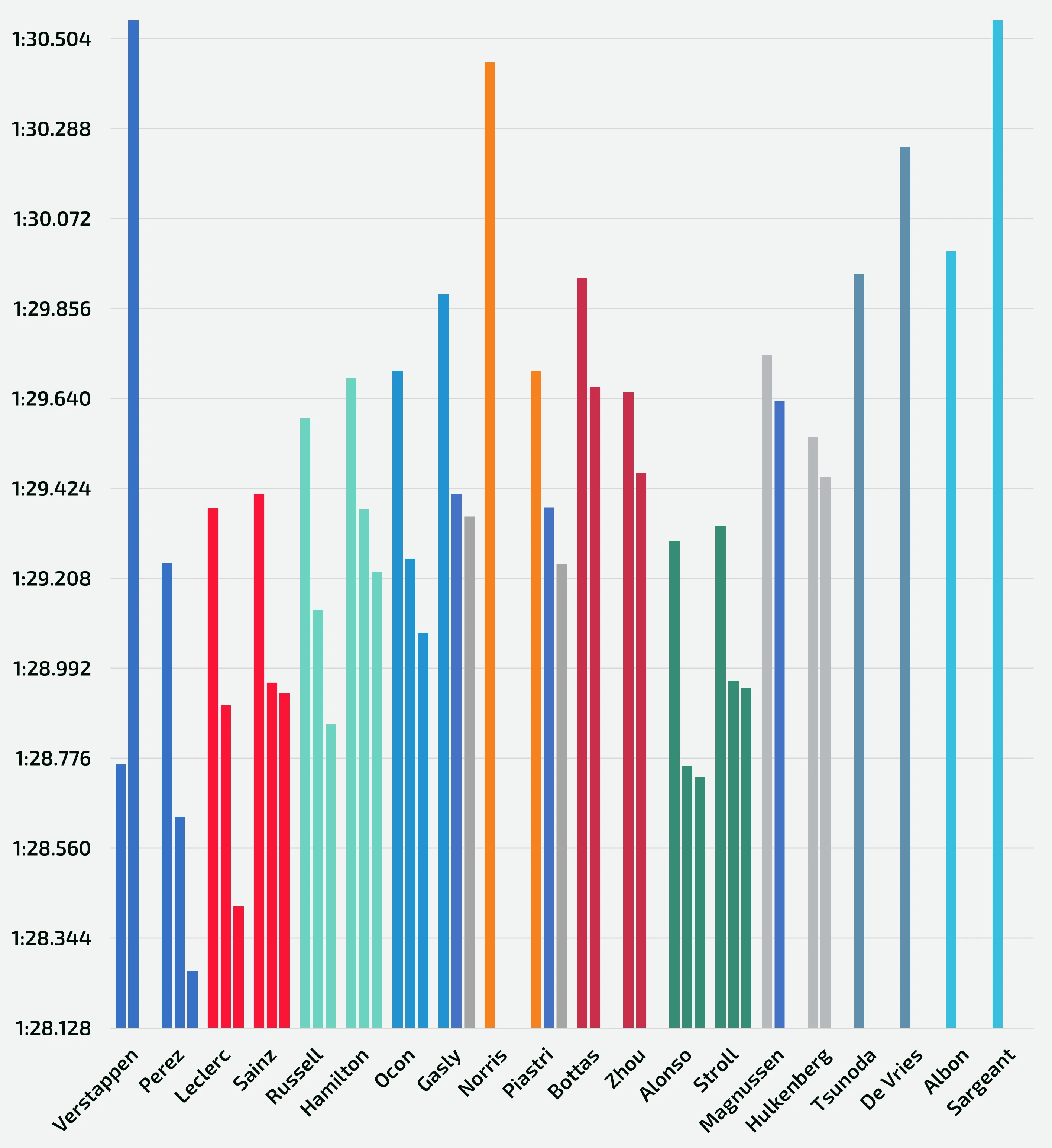
Laptimes progression from Q1 to Q3 session
For example, it can be seen how Perez gradually managed to find performance with the rubbering of the track. The same can be said for Leclerc, author of a magical lap in Q3 (of which we will further discuss later), but not for his teammate Sainz, who has suffered from a lack of confidence at the wheel of the SF-23, and in Q3 only marginally improved his time obtained in Q2… The same performance plateau is visible at Aston Martin, even with both drivers. In Stroll's case, however, if a mistake hadn't been made in the third sector of his last attempt, another 2 tenths would have been nibbled away - and, probably, as many grid positions. Excellent performance therefore for the Canadian driver, who is clearly recovering from his wrist injury.

Split Time in Sector 1 of each driver's best qualifying lap
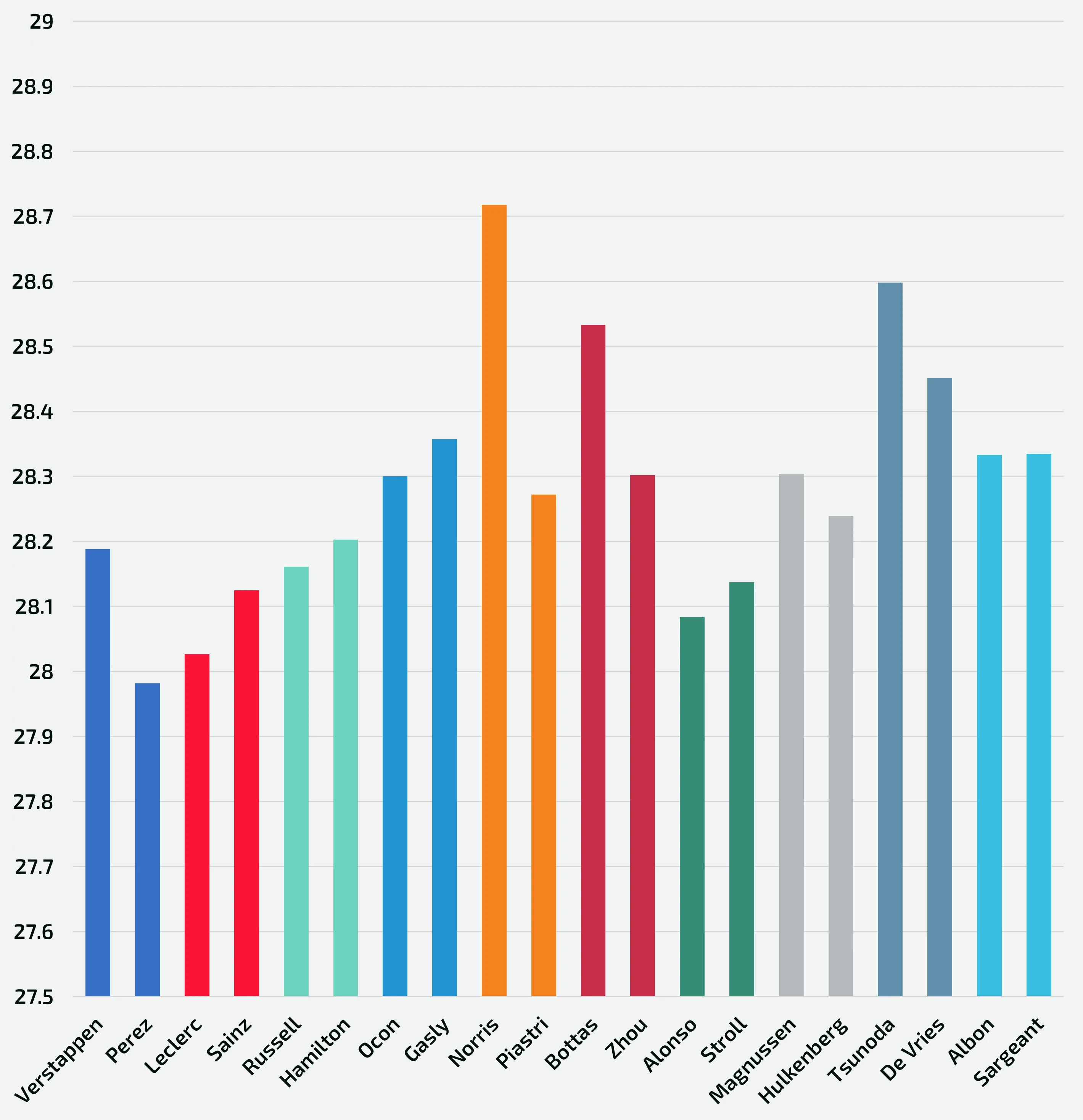
Split Time in Sector 2 of each driver's best qualifying lap
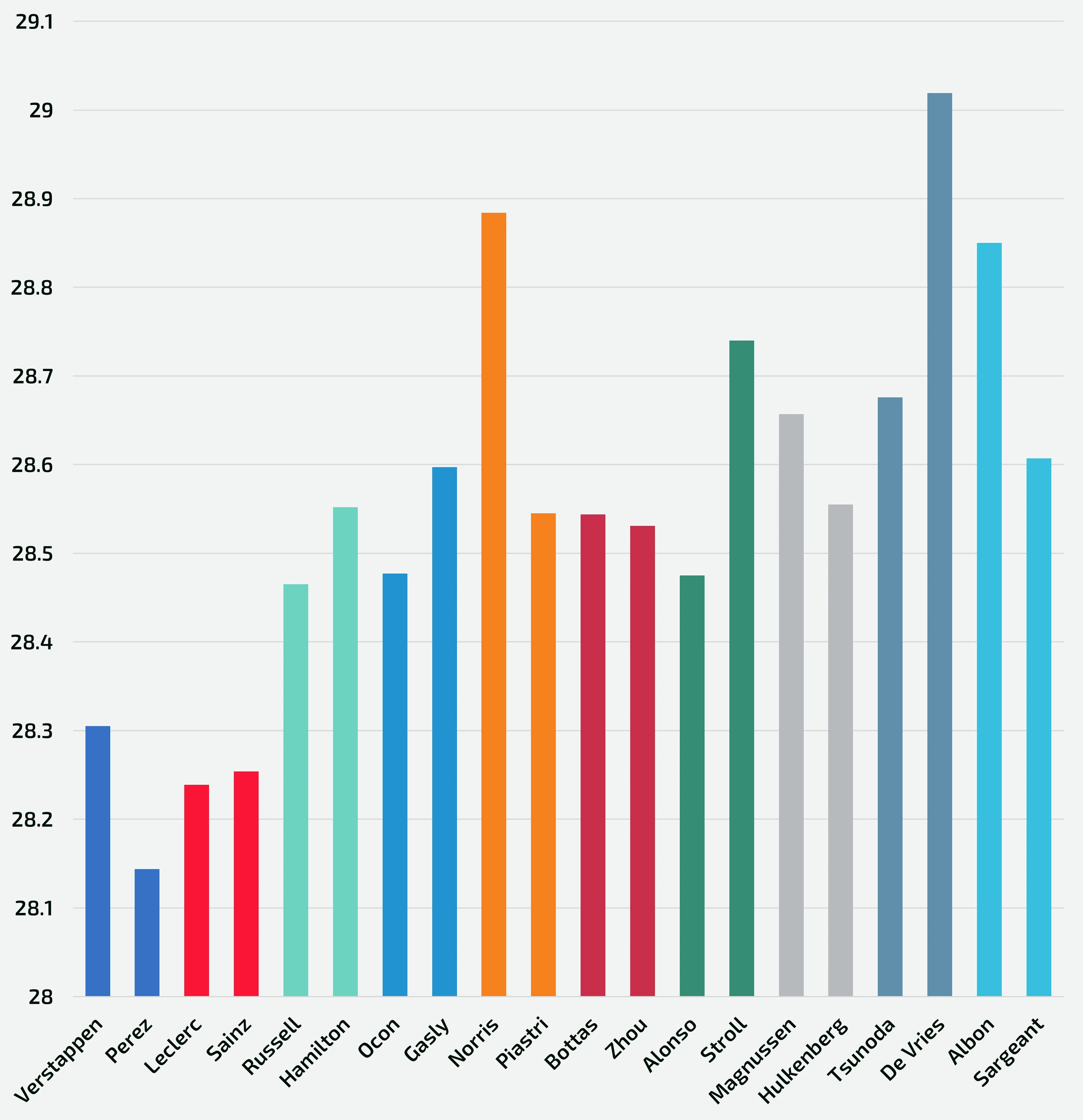
Split Time in Sector 3 of each driver's best qualifying lap
The graphs above compare the sector-by-sector performance of each driver's best personal laptimes, also giving important indications about the setup chosen by each team for their single-seaters.
In the first sector, for example, stands out - in addition to the usual Red Bull - an Aston Martin with a high downforce setup and, at Ferrari, a Charles Leclerc capable of giving his teammate even 4 tenths!
In the second sector, which favors (like the third one) top speeds to the detriment of cornering performance, the amazing aerodynamic efficiency of the Red Bull comes out, with the two Ferraris slightly behind.
The situation repeats itself in the third sector, where Perez (missing Verstappen's counter-test, as mentioned stopped in Q2) trims 1 tenth of a second on the Ferrari duo and even bigger gaps (from 3 to 4 tenths) to his rivals at Aston Martin.
![Speed Trap of each driver's best qualifying lap [km/h]](/articoliImg/galleryImage1679216075-4.webp)
Speed Trap of each driver's best qualifying lap [km/h]
The considerations just made are confirmed by the top speeds, in which the RB19 scores the incomparable figure of 337 km/h. The two Ferraris are 7-8 km/h down, the Mercedes about 10 km/h down and the Aston Martin about 12 km/h down. From this point of view, McLaren is the slowest on the straights, which does not exceed the value of 316 km/h - a factor that will leave Oscar Piastri very vulnerable in every fight that will happen in the race.
Another team that, beyond the final results, has done well in my opinion is Williams. The Grove team left qualifying with both drivers out of Q1 but, in the opinion of who is writing, even a Q3 with Albon would have been possible by avoiding strategic mistakes.
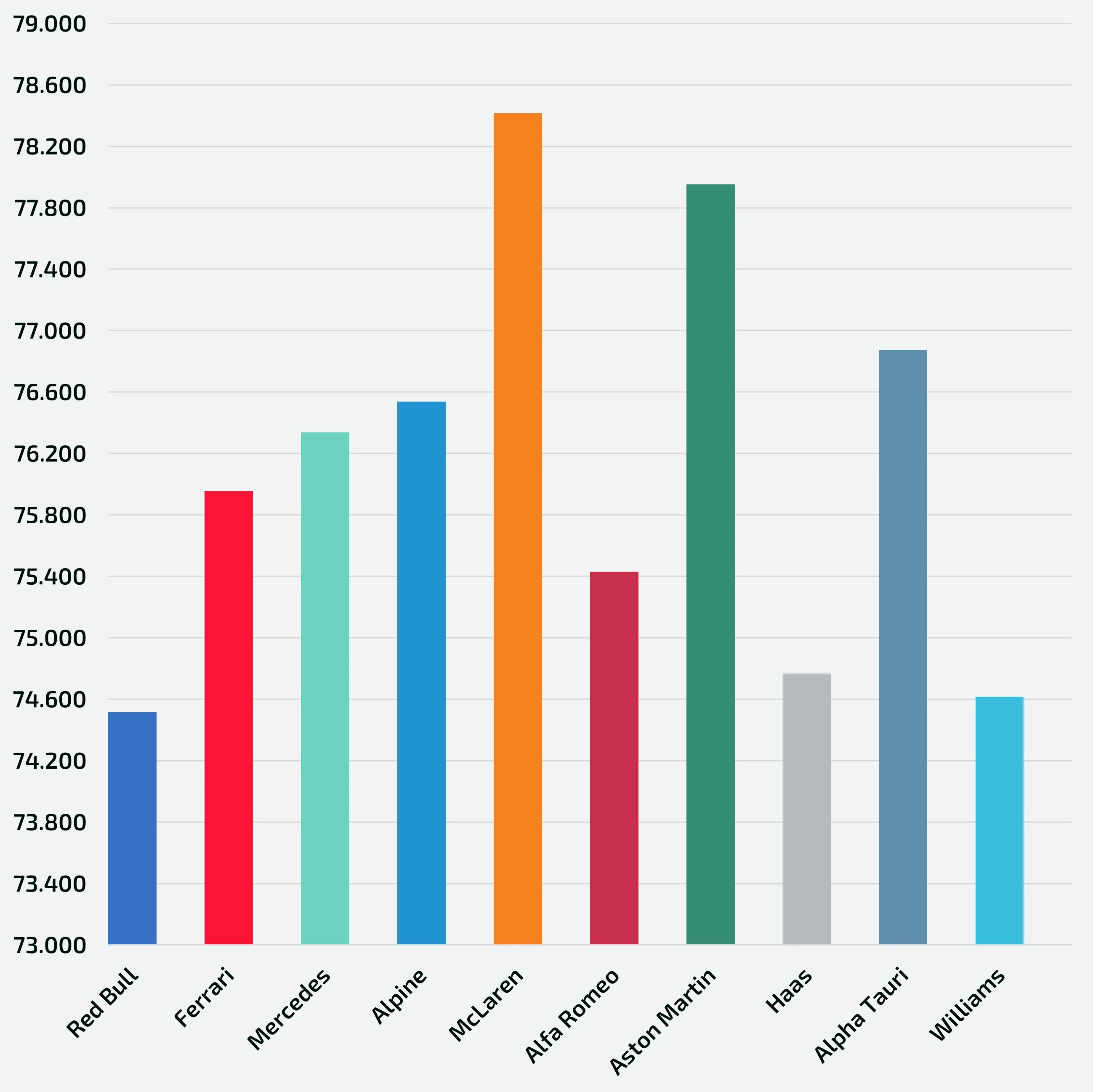
Average load index for each team in qualifying [%]
Trying to "play" with the data in order to find a key to understanding the performance, a new type of graph can come in handy, the one relating to the load indexes. The latter are obtained as an average of the two drivers of each team, relating to the ratio between average speed and maximum speed obtained in their best lap.
How are load indexes analyzed? Well, they give an idea not too dissimilar from reality of how much downforce or aerodynamic efficiency is favored with each setup. In particular, low load index values show an "unloaded" car, therefore capable of monstrous speeds on the straights (it is no coincidence that Red Bull has the lowest figure of all), while high load indexes give an indication of a higher downforce wing specs, which helps in Jeddah's corners.
What secrets do telemetry analysis reveal?
The most interesting comparison, as the most detailed, is the one relating to the telemetry of the personal best laps. For this analysis, we have chosen to compare the following drivers:
- Perez (Red Bull);
- Alonso (Aston Martin);
- Russell (Mercedes);
- Leclerc (Ferrari);
![Telemetry comparison between Perez, Alonso Russell and Leclerc - Speed trace [km/h]](/articoliImg/galleryImage1679216075-6.webp)
Telemetry comparison between Perez, Alonso, Russell and Leclerc - Speed trace [km/h]
The telemetry shows something very interesting: in addition to the levels of aerodynamic efficiency chosen, which we have already talked about and which can be found at the end of each straight, it is curious to note how at the end of the first sector Leclerc is the fastest of the 4 in the acceleration leading up to the banked hairpin at Turn 13.
![Telemetry comparison between Perez, Alonso, Russell and Leclerc - Throttle pedal position instant by instant [%]](/articoliImg/galleryImage1679216075-7.webp)
Telemetry comparison between Perez, Alonso, Russell and Leclerc - Throttle pedal position instant by instant [%]
Why do I say curious? Because in the same sector Charles is the driver who "telegraphs" the most, i.e. applies the accelerator in bursts, a driving style which in principle would cause laptime to be lost. Evidently, Leclerc has found a way to remedy this critical issue, perhaps by sacrificing mid-corner speed in favor of a better exit.
![Average throttle application [%] in each driver's best qualifying lap](/articoliImg/galleryImage1679216075-8.webp)
Average throttle application [%] in each driver's best qualifying lap
Even if not strictly telemetric, but still obtained - indirectly - from telemetry, the radar graph above gives us an "average" idea of what the percentage of gas pedal opening was: in this area Alonso excels, who as explained in the free practice analysis, can benefit from an optimal traction, in which it risks less wheelspin than its competitors. Perez, on the other hand, applies less throttle (about -2%), but as mentioned, Red Bull has chosen a lower level of aerodynamic load for the Saudi Arabian GP, so it is legitimate to think that the Mexican driver had to lift his foot when cornering slightly more than his rivals, making up for lost time (with interest) on the straights.
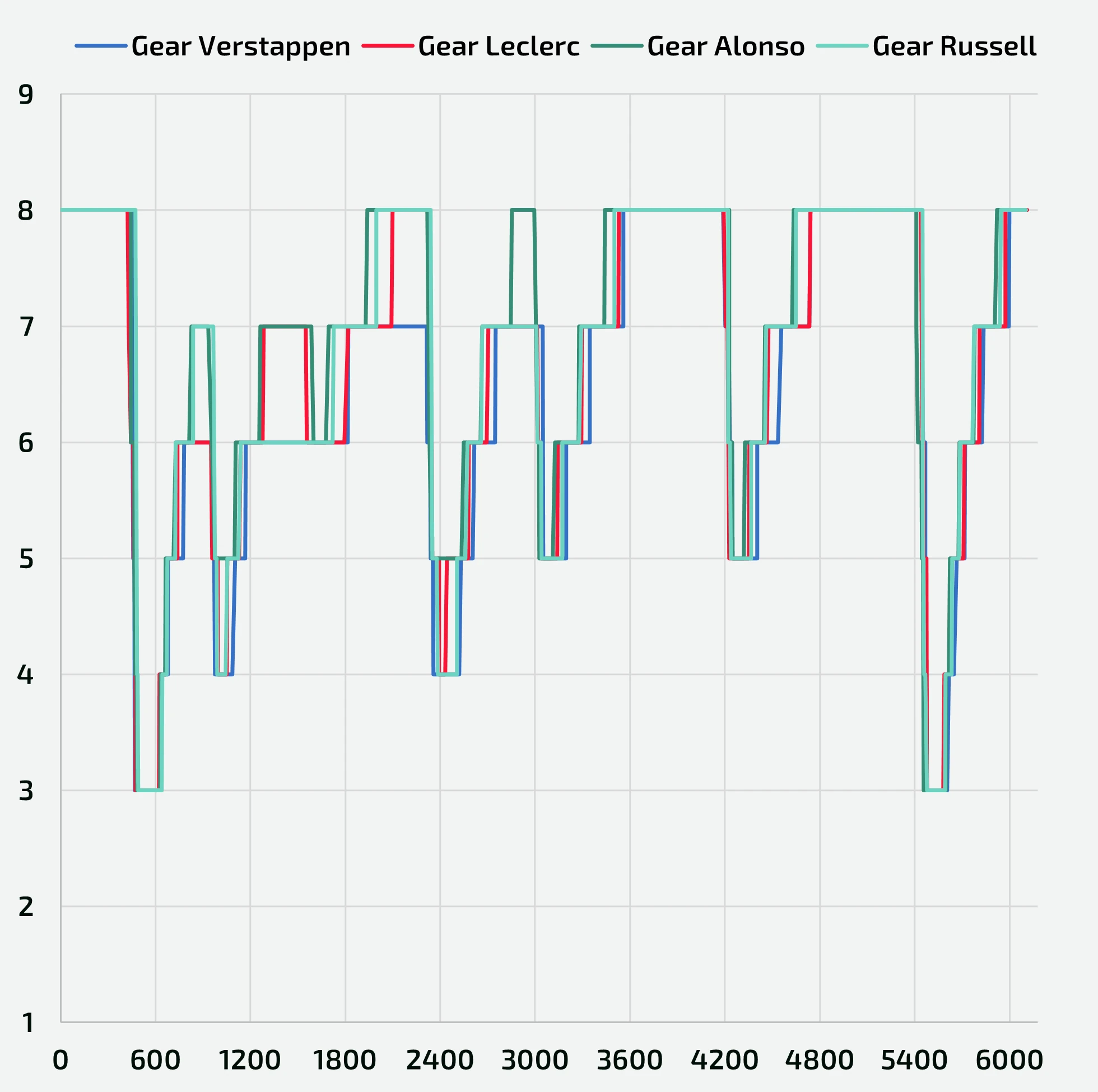
Telemetry comparison between Perez, Alonso, Russell and Leclerc - Gear number instant by instant in each driver's best qualifying lap
From the comparison regarding the use of the gearbox, we can still see Alonso's tendency to upshift quickly (due to excellent traction and the "short" gear ratios of the Mercedes Power Unit transmission). Another peculiarity is Leclerc's shifting strategy, who on the straights stays in seventh gear much more than the others, who instead immediately upshift to eighth.
What can this mean? In addition to the possibility that the ratios chosen - and homologated for the whole season, as prescribed by the Technical Regulations - by Ferrari are longer, Leclerc's strategy could be related to the recharge of the battery pack.
In fact, by keeping the seventh gear, its engine revs up, and the battery pack is recharged (albeit minimally) in a proportional way. This is because the MGU-H, mounted onto the same shaft as the turbocharger, spins at the same angular velocity, so it makes sense to spin it faster when recharging.
If you want to see the other side of the coin, this was more of a necessity than a virtue for Ferrari, as without this expedient Leclerc would have incurred the same clipping that Sainz was the victim of over the weekend. For an explanation of what clipping is, you can check the free practice analysis.
Predictions on the Grand Prix: who starts favourite?
Needless to say, Red Bull starts on pole with Perez, so - barring cataclysms - the Mexican just needs to run a clean race and take advantage of the performance advantage enjoyed by his RB19. Alonso will try to make his life harder, but if the clash between the two should take on the contours of a close fight, the Spaniard's AMR23 will not be able to count on an excellent top speed.
On paper, the most exciting race should come out from Leclerc and Verstappen, relegated for different reasons in positions that don't match their talent and the performance level of their cars. Still with the usual caveat about the atypical nature of the races in Jeddah, where the unexpected is just behind the corner, I should say that in the event of a clean race Max Verstappen could even aim for second place behind Perez. If, instead, the Dutchman were to exceed my expectations and win the Grand Prix starting from 15th position, it would be a simply overwhelming showdown.
Index
A Saturday you wouldn't expect in Jeddah... Perez ahead of Leclerc and Alonso. Verstappen out in Q2!